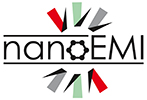
|
|
|
|
 |
 |
|

OneAngstrom offers SAMSON, a universal platform for molecular modeling. Get SAMSON and SAMSON Elements – modules for SAMSON that help you reach your modeling and simulation objectives – at https://1-a.io.
|
 |
 |
 |

The mission of AMO is to connect discovery and innovation through dedicated research for the potentials emerging from the convergence between electronics and photonics enabled by nanotechnology, between basic and applied research as well as the integration of physics and engineering. Although the innovations emerging from this triple of convergence are known as decisive pacemakers for new industrial ecosystems, bridges remain still to be crossed. With a solid ground of scientific knowledge under the feet and experimental hands on realistic technology guidelines only the sky seems to be the limit for a highly motivated AMO team when these bridges are crossed in a collective motion.
|
 |
 |
 |

Developed at a Grenoble based research institute, GGG offers graphene nanosheets exfoliated with an innovative microfluidic process using hydrodynamic cavitation ‘on a chip’. GGG produces graphene sheets whose thickness runs from 1 to 10 layers with an average 150-300 nm lateral size. They are delivered in a solution at a concentration between 2 g/L and 10 g/L. The usage of a biodegradable dispersing agent allows GGG to be an environmentally compatible process in graphene production. We are looking for industrial partners to test the interest for different applications.
|
 |
 |
 |

The Graphene Council was founded in 2013 with a mission to serve the global community of graphene professionals. Today, The Graphene Council is the largest community in the world for graphene researchers, academics, producers, developers, investors, nanotechnologists, regulatory agencies, research institutes, and material science specialists.
|
 |
 |
 |

nanoEMI is a producer of high-quality graphene flakes in the form of powder, suspension in solution of isopropyl alcohol and castor oil. nanoEMI develops composites for shielding electromagnetic radiation in the broad spectral range to improve electromagnetic compatibility of electronic devices.
|
 |
 |
 |

Heidelberg Instruments and SwissLitho AG joined forces in early 2018. Together, they offer the widest range of direct write micro- and nanolithography systems in the world, from low-cost desktop solutions to high-end writers for substrates larger than 1m. Their products are used for prototyping in R&D, industrial manufacturing, and academic research. A full wafer can be patterned in a few minutes with sub-micron resolution, making mask aligners obsolete. Single-nm resolution with simultaneous pattern inspection is achieved with the unique NanoFrazor technology. Systems from both companies can be used to obtain micro- and nanostructures with high aspect ratio as well as in grayscale mode, which makes them particularly suitable to create templates for NIL applications.
|
 |
 |
 |

Within the LMCat (liquid metal catalysis) project, our EU research consortium designed a reactor for in situ observations of the growth of graphene on a liquid copper substrate. Experimental methods include simultaneous operando synchrotron X-ray scattering, Raman spectroscopy, and optical microscopy techniques. This enables us to observe the growth of large-size monocrystalline graphene sheets on molten copper at 1370 K. A myriad of interesting phenomena has been observed, which are currently under analysis by the LMCat consortium. We invite you to the booth of LMCat to discuss potential applications of our CVD furnace for operando investigations of 2D materials synthesis.
|
 |
 |
 |
 |
 |
|
|
|
|
|
|
 |
|

